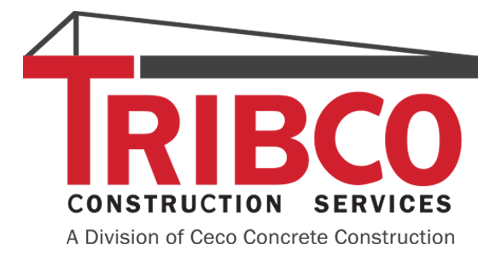INVOLVE CECO EARLY TO REDUCE YOUR PROJECT’S CARBON FOOTPRINT
Jun 24th 2021
Whether you’re asked to provide an Environment Product Declaration for carbon emissions or your next project has goals to minimize CO2, Ceco can help!
In 2015, the Paris Climate Agreement set a goal to limit the earth’s average temperature increase to 1.5 degrees. To meet the temperature increase target, scientists say the earth needs to limit total carbon emissions to 340 gigatons of carbon dioxide (CO2) by 2050. To reach the goal, the earth needs a 65 percent reduction by 2030 and zero emissions by 2040 because little progress has been made to date.
The greatest opportunity for carbon reduction comes from the construction industry, which contributes 43 percent of all carbon emissions and comprises the largest emission sector. Of the construction industry segments, 11 percent of all carbon emissions come from building materials for core and shell construction.
Following the renewed U.S. commitment to the Paris Agreement, new projects in the United States will have carbon reduction goals to achieve results that support the overall carbon reduction strategy. Many project owners are becoming interested in the amounts of embodied carbon in their new projects. A few cities are crafting targets to limit embodied carbon. Studies have shown that mindful preconstruction planning and design creates a sizable reduction in the embodied carbon of a concrete structure.
Involve Ceco early to measure, reduce carbon footprints
Ceco can play a role in measuring and reducing the embodied carbon on your next project. Initially, an efficient design can reduce the amount of concrete required through the use of concrete-efficient elements based upon loading and spans. For example, Ceco Pan Construction can provide 35- to 60-foot-long bays with concrete equivalent depths of less than 10 inches and some that approach 8 inches. These results create substantially lighter slabs with less concrete and reinforcing.
This approach increases efficiency in the usable floor area that may allow for a smaller needed area to be built. An approach to reduce needed concrete may also reduce foundation loads and concrete needs. Ceco might recommend shorter spans and thinner post-tensioned slabs based upon specific project criteria. All options are available when Ceco is engaged early in your project planning.
Your concrete contractor takes point
Ceco can make recommendations in floor structural framing layout, reinforcing types and strengths, sequencing of pours and scheduling in preparation for discussions with our ready-mix partners. We team with suppliers to generate  complementary concrete mix designs to leverage supplementary cementitious materials (SCMs) and other performance additives while providing the needed strength properties to meet the project’s scheduling demands of each level and structural element.Our formwork expertise and analysis of formwork quantities supplied, form release periods and formwork movement can all be considered in these early planning stages to reduce carbon. Leveraging Ceco’s constructability analysis in conjunction with achieving embodied carbon goals should be a symbiotic process.
complementary concrete mix designs to leverage supplementary cementitious materials (SCMs) and other performance additives while providing the needed strength properties to meet the project’s scheduling demands of each level and structural element.Our formwork expertise and analysis of formwork quantities supplied, form release periods and formwork movement can all be considered in these early planning stages to reduce carbon. Leveraging Ceco’s constructability analysis in conjunction with achieving embodied carbon goals should be a symbiotic process.
Given the freedom to work with our ready-mix supplier without mandated prescriptive mixes, we can leverage the technical expertise of the team. Ceco will likely recommend that some elements, not all, be designed and built intentionally with mixes that achieve full compressive strength beyond the industry standard of 28 days, and we will closely challenge those that seek full strength earlier than 28 days.
From structural selection to mix design—we explore all options
We know that sequestering carbon within the mix is one piece of the equation. We will utilize all methods in the market to reduce the carbon footprint of your project. Additional steps to consider include transit distances and aggregate options—even synthetic aggregate—that can help Ceco achieve your carbon goals. For example, higher-strength aggregate can help produce high-strength concrete with reduced cement. All these options can be considered in achieving project targets.
Concrete structures contribute to reducing environmental carbon long after the construction process. The valuable thermal mass properties of concrete can reduce building operating and energy costs to further reduce the carbon footprint.
Don’t panic when you are asked for an Environmental Product Declaration (EPD) seeking the kilograms of embodied carbon (Kg CO2e). Ceco can quantify the embodied carbon of your cast-in-place concrete project.
Download a PDF of our Ceco Advantage informational brochure on carbon emissions.
 US Dollars
US Dollars




